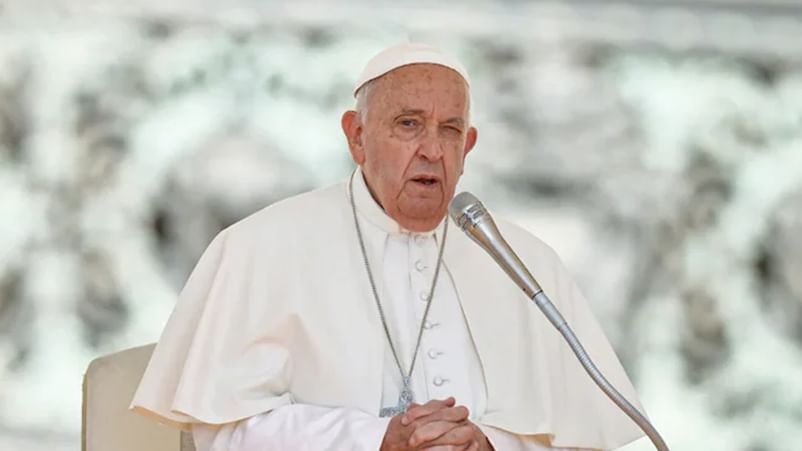
Rome: Pope Francis’ condition has stabilized after suffering two acute respiratory crises, allowing him to be taken off noninvasive mechanical ventilation, the Vatican confirmed on Tuesday. The 88-year-old pontiff, who has been battling double pneumonia for over two weeks, is now receiving high-flow oxygen via a nasal tube to assist his breathing.
Despite this progress, doctors remain cautious about his fragile health, emphasizing that his prognosis is still guarded and that he is not yet out of danger.
Pope Francis’ Health Condition: A Two-Week Battle
The Pope’s health deteriorated significantly on Monday when he experienced two serious respiratory crises, requiring emergency medical intervention. Doctors had to extract large amounts of mucus from his lungs, a procedure that was performed using two bronchoscopies—a process where a camera-tipped tube is inserted into the airways to suction out fluid.
His condition improved by early Tuesday, allowing him to sleep through the night before resuming respiratory physiotherapy to strengthen his lungs.
“The pope slept through the night, now rest continues,” the Vatican said in its latest update.
Medical Interventions and Challenges
- Respiratory Crises on Monday: The Pope required noninvasive mechanical ventilation due to excessive mucus buildup.
- Bronchoscopies Performed: Doctors manually extracted copious amounts of mucus from his lungs, an indication that his body is struggling to clear secretions on its own.
- Current Status: He is no longer on a mechanical ventilation mask, but still requires high-flow oxygen for breathing support.
- Chronic Lung Issues: Pope Francis had part of one lung removed as a young man, making him more vulnerable to lung infections and respiratory complications.
Dr. John Coleman, a pulmonary critical care expert at Northwestern Medicine in Chicago, noted that these repeated episodes are concerning.
“The fact that they had to go in there and remove it manually is concerning because it means that he is not clearing the secretions on his own,” he said.
Coleman added that while the Pope is making small steps forward, he is also experiencing setbacks, making his recovery uncertain and unpredictable.
Why Pope Francis’ Condition is Concerning
- Limited Physical Activity: The Pope, who is overweight and primarily uses a wheelchair, lacks the muscle strength to cough out fluid from his lungs, making respiratory infections more dangerous for him.
- Avoiding Intubation: Doctors have opted for noninvasive mechanical ventilation to prevent the need for intubation, which would require a more aggressive and invasive intervention.
- Ethical Considerations: The Vatican has not disclosed whether Pope Francis has advanced medical directives regarding life-sustaining treatments in case of further decline.
Catholic Teachings on End-of-Life Care
The Catholic Church upholds that life must be defended from conception until natural death. However, “extraordinary” or disproportionate treatments can be withdrawn if they no longer offer benefits or merely prolong suffering.
Pope Francis himself addressed this in a 2017 speech, stating:
“There is no obligation to have recourse in all circumstances to every possible remedy. It thus makes possible a decision that is morally qualified as withdrawal of overzealous treatment.”
Archbishop Vincenzo Paglia, head of the Pontifical Academy for Life, reinforced this sentiment, stating:
“Today the Pope is giving us an extraordinary teaching on fragility. He is reminding us, especially the elderly, that we are all fragile and need to care for one another.”
Pope Francis’ Hospitalization: 18 Nights and Counting
As of Tuesday, Pope Francis has been hospitalized for 18 nights, though his case is not yet approaching the record set by St. John Paul II, who endured multiple prolonged hospitalizations over his 27-year papacy.
With his health in a delicate state, the Vatican and the global Catholic community continue to closely monitor his condition, hoping for a full recovery in the coming days.

 Share
Share
_458360041_124x80.jpg)


